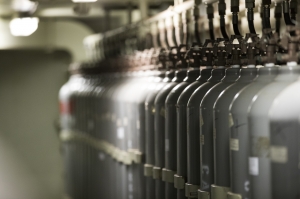


(Posted on 14/02/20)
Shipowners looking to retrofit marine exhaust gas cleaning systems as a way of complying with new sulphur emissions rules should verify the capacity of their fixed fire-fighting systems before undertaking any retrofit projects.
While amendments to MARPOL Annex VI, dubbed the IMO 2020 regulation, do not specifically require additional fire-fighting capability, leading safety expert Survitec reminds owners that any increase in machinery space size will require an increase in fire-extinguishing capacity.
Dagfinn Aas, Director, Technical Management, Survitec Fire Solutions, said: “A scrubber installation often requires extending the engine room in the casing area and when the engine room’s volume is increased the capacity of the extinguishing agent – in most cases CO2 - must also be increased.
“If a scrubber is installed in a totally separate space, with a bulkhead facing towards the engine room, then there is no need for an additional fire-fighting system. In other cases, additional nozzles will have to be connected to the existing pipework covering the scrubber area, or additional CO2 cylinders may be required. However, we have seen scrubber retrofits that have required completely new fire-fighting systems. It all depends on the calculations and the CO2 concentration.”
For a CO2 fire-extinguishing system, the calculation is based on 40% concentration of the total gross volume, excluding the casing, or 35% concentration of the gross volume including casing; whichever method gives the highest CO2 capacity.
“When volume is increased, the system needs to be re-calculated and re-engineered with additional CO2 cylinders and additional nozzles. New flow calculations need to be carried out to verify the new system will discharge the correct amount of gas within the required two minutes. Drawings must also be sent to the classification society for approval before installation can take place. This means some installations may have to be removed and reinstalled,” continued Aas.
In the run up to the 1st January 2020 implementation date, Survitec registered a hike in fire system retrofits, but with up to 6% of the global merchant fleet set to have a scrubber installed by year-end, the company advises to plan ahead.
“We have completed more than 30 retrofit projects over the past two years in Europe alone,” said Michal Peruga, Operations Director, Survitec Fire Solutions. “However, we are seeing a number of inquiries where shipowners have left it too late and have realised the need for CO2 upgrades only when classification surveyors begin certifying the scrubber installation.
“Inquiries are coming in just one or two months before the drydocking, which is far too late. This can result in delays to the vessel re-entering service and unbudgeted drydocking costs.”
While most upgrades to the fixed fire-fighting system are relatively simple, requiring additional CO2 cylinders, nozzles and extra pipework, some projects have required complete system redesigns or a totally separate fire-fighting system.
“It can be a major task updating the drawings and submitting the paperwork for class approval,” said Peruga. “It could take four to five months from taking an order to getting the approvals in place and carrying out the engineering before the vessel returns to service, assuming drydock availability,”
Leading vessel performance platform Smart Ship Hub says the industry should expect a breakthrough year... Read more
The Nordic countries are taking an important step towards decarbonising maritime transport with the... Read more
Germany’s Steelpaint has appointed ADD Marine as its representative for Greece and Cyprus, strengthening... Read more
Rio Tinto’s first Pilbara-made iron ore rail car has rolled off the production line in Karratha... Read more
Precision meets progress at Phu My Port, Vietnam. The LPS 550 has been deployed to handle bulk commodities... Read more
bound4blue, a global leader in wind propulsion systems, has expanded its industrial footprint in Asia... Read more
As the industry explores multiple decarbonisation pathways, methanol is gaining attention as a practical... Read more
Technology group Wärtsilä will supply an integrated hybrid propulsion system for a bulk carrier... Read more
Superior Industries, Inc., a US-based manufacturer and global supplier of bulk material processing and... Read more
ESL Shipping has taken a significant step forward in digitalisation by deploying a new multichannel... Read more